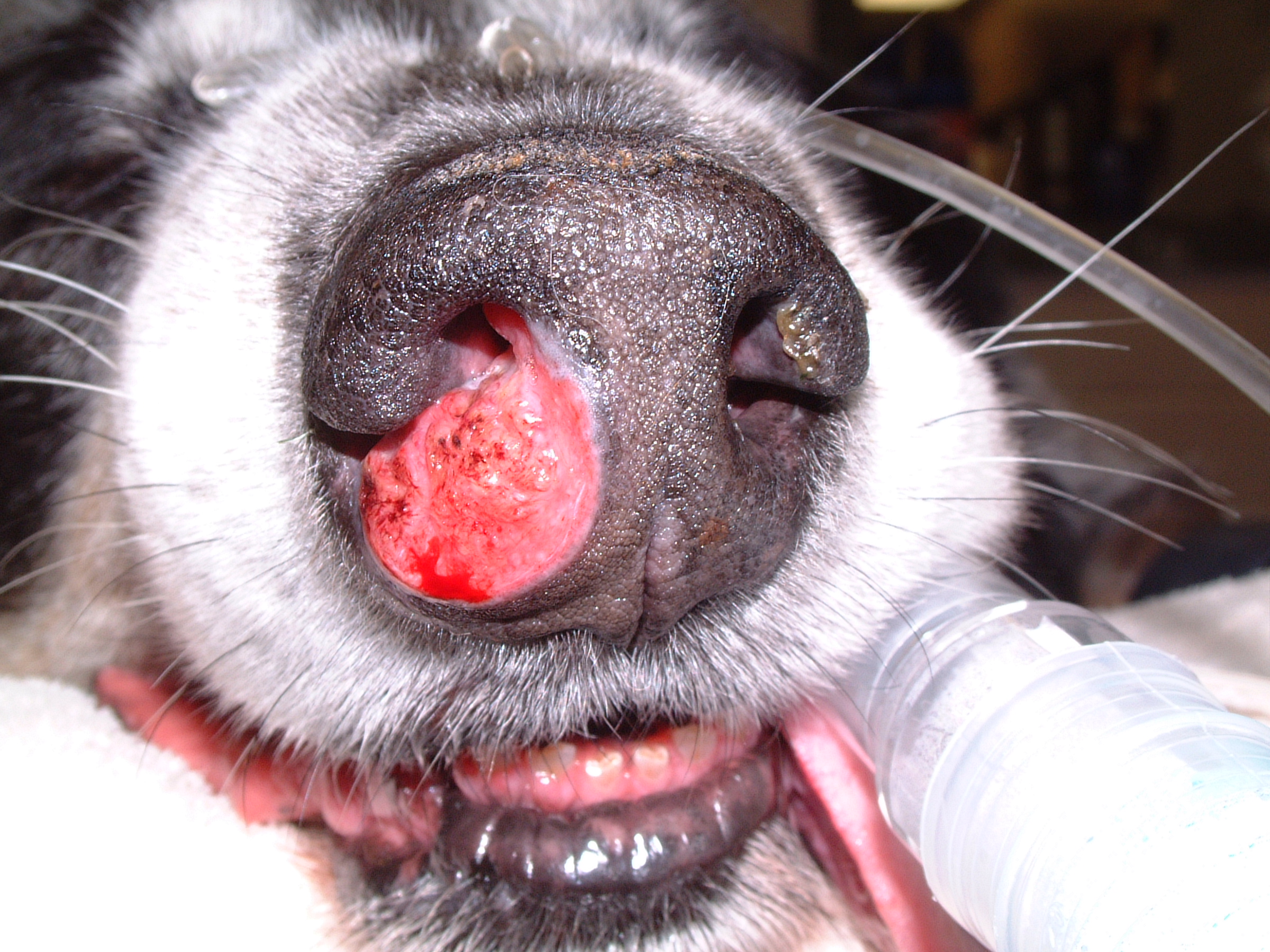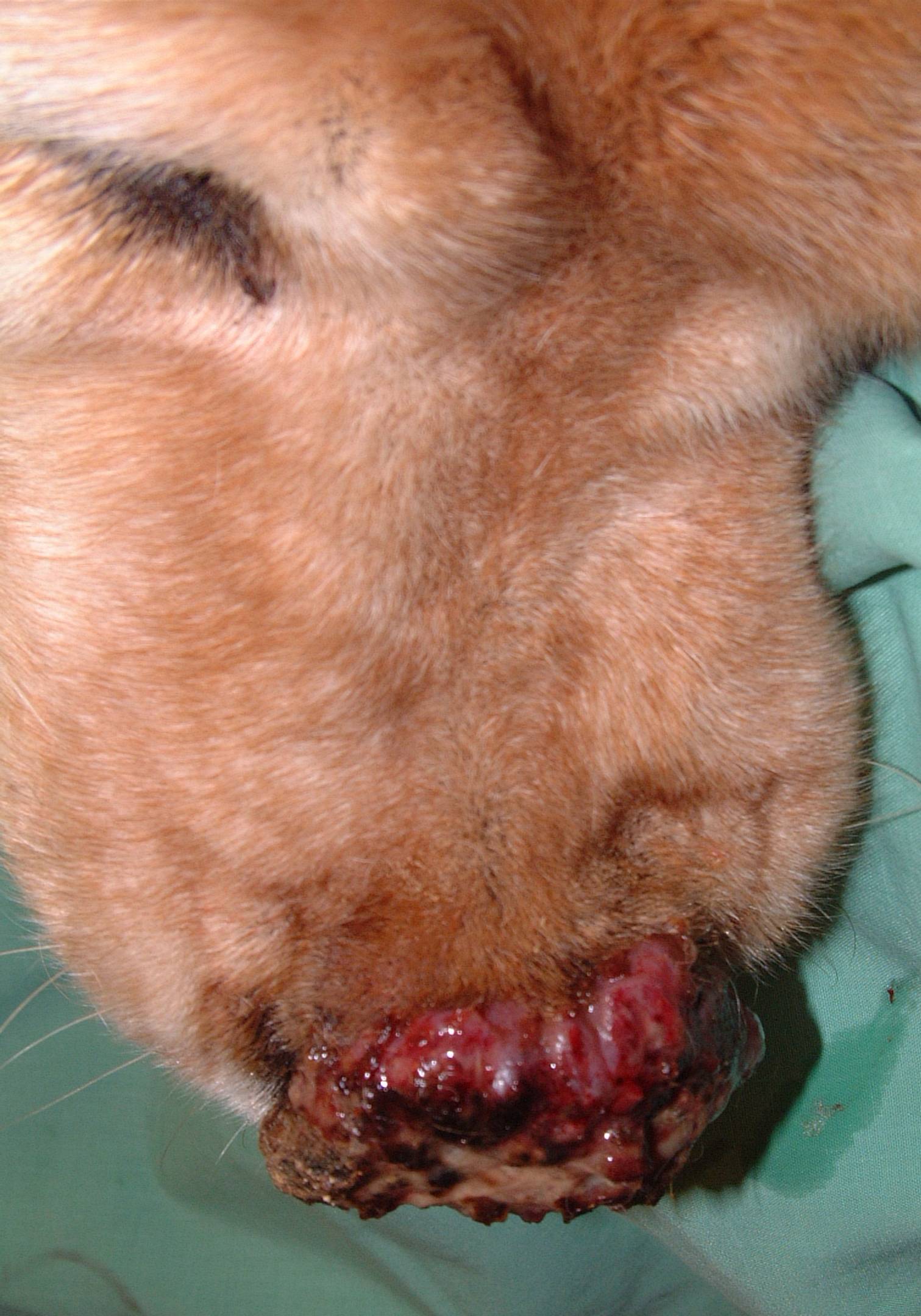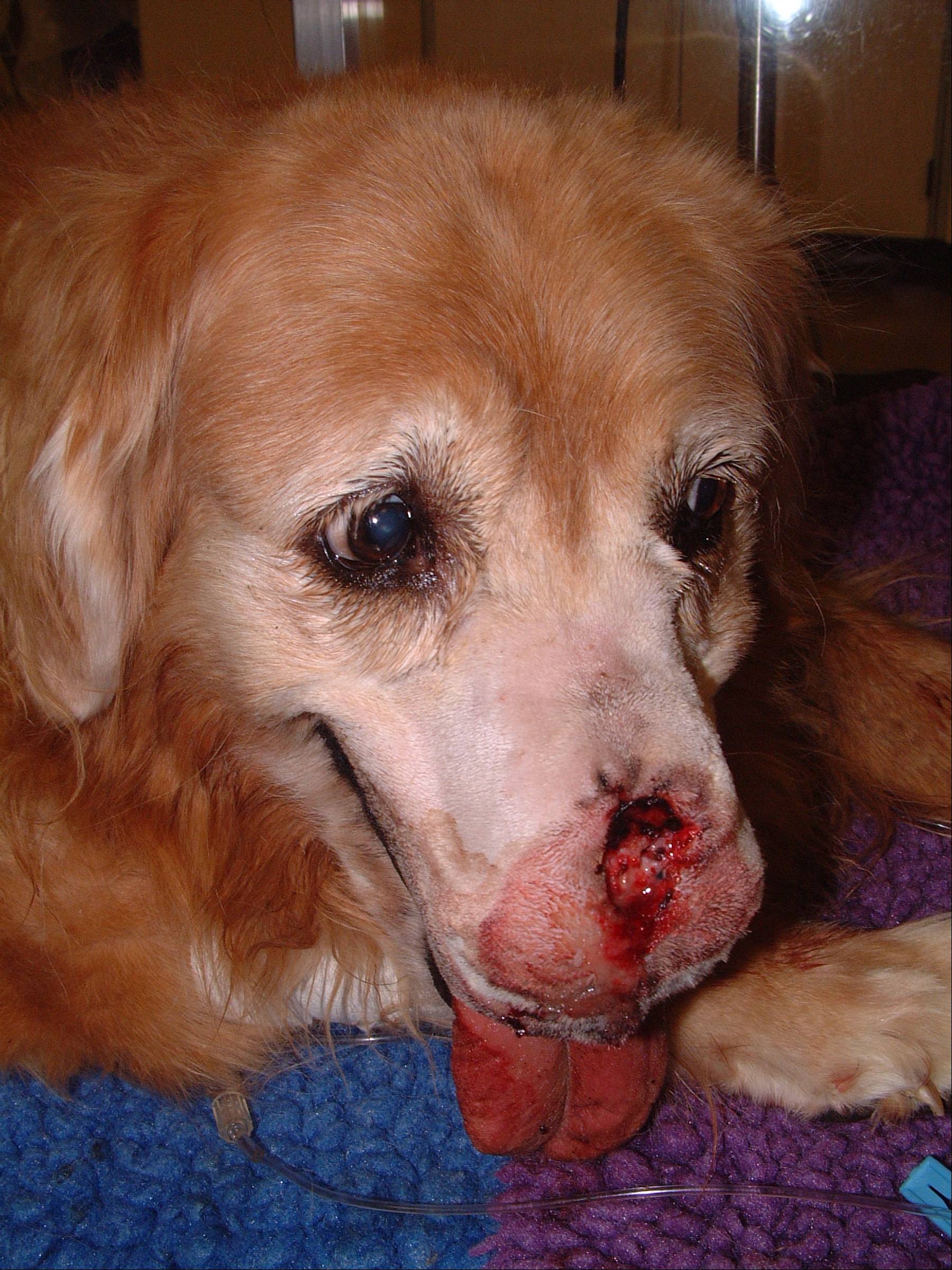nasal planum tumors
BACKGROUND
Squamous cell carcinoma (SCC) is the most common tumor of the nasal planum in cats, but this tumor is rare in dogs. SCC of the nasal planum and ear pinnae is caused by ultraviolet radiation and white-haired cats have a 13.4-times greater risk of nasal planum SCC. They are locally invasive tumors. The lesions on the nasal planum progress from initial crusty and reddened lesions to superficial erosions and ulceration (common) and finally to deeply erosive and ulcerated lesions (i.e., SCC in situ to superficial SCC to deeply infiltrative SCC). SCC involves multiple sites in 30% of cats, especially the ear pinnae and eyelids. Nasal planum, pinnae and eyelid SCC in cats rarely metastasize to the lymph nodes or other organs.
DIAGNOSIS
Nasal planum SCC in cats is highly suspected based on poorly pigmented hair coat, outdoor lifestyle, and the appearance of the nasal planum. An incisional biopsy can be performed, but is often not required.
CLINICAL STAGING
CT or MRI scans of the nose is recommended in dogs, but not cats, to determine the extent of the tumor and plan the surgical excision. Thoracic CT or radiographs are recommended for evaluation of the lungs for metastasis. Sentinel lymph node mapping and excision should be considered for dogs with nasal planum SCC and possibly cats, although lymph node metastasis is rare in cats.
TREATMENT
Surgical excision is the recommended treatment for cats and dogs with nasal planum SCC. The cosmetic results are acceptable in cats and dogs. Cats are initially reluctant to eat because they rely on their sense of smell to stimulate their appetite. However, this is temporary and feeding tubes are rarely required. A less aggressive surgical technique, consisting of curettage and diathermy, has recently been reported with good cosmetic and oncologic results.
Cryosurgery is an option for cats with small, superficial lesions. However, multiple treatments are often required and 19% of nasal planum tumors do not respond after 2-3 treatments.
Strontium-90 plesiotherapy (local radiation) or external-beam radiation therapy, intralesional chemotherapy, electrochemotherapy, and photodynamic therapy have also been reported for the treatment of nasal planum SCC in cats.
PROGNOSIS
Cats
The prognosis for cats with nasal planum SCC is very good following treatment with surgery, cryosurgery, or radiation therapy. Local recurrence rates are less than 20% with a median disease-free interval of 594 days for surgery alone and 426 days for cats with SCC in multiple locations. The median survival time following surgical excision is 673 days for cats with nasal planum lesions and 530 days for cats with SCC in multiple locations.
Curettage and diathermy was reported in 34 cats with nasal planum lesions varying from actinic dysplasia to superficial SCC involving < 50% of the nasal planum. All cats had a complete response and only two cats had local tumor recurrence (at 161 and 192 days) after a median followup time of 18.2 months, with a 12-month disease-free rate of 94%.
Cryosurgery is indicated in cats with small, superficial, and noninvasive SCC. The response to cryosurgery is site-dependent with 100% of eyelid and pinna lesions responding after one treatment, but 19% of nasal planum SCC lesions not responding after 2-3 treatments. Local tumor recurrence rates are 17%-73% with 1- and 3-year disease-free rates of 83% and 81%, respectively. The median disease-free interval is 254 days and the median survival time is 682 days after cryosurgery treatment of superficial and non-invasive SCC of the eyelids, pinna, and nasal planum.
Strontium-90 plesiotherapy is indicated for superficial and minimally invasive SCC as strontium 90 penetrates < 2mm. When used for these lesions, 85%-88% of cats have a complete response and 10%-13% of cats have a partial response. Local tumor recurrence is reported in 20% of cats and 33% develop new lesions in different location. The 1- and 3-year disease-free rates are 89% and 82%, respectively; with a median disease-free interval of 1034 days and median survival time of 3076 days.
In one pilot study of six cats with advanced nasal planum SCC treated with intralesional carboplatin and external beam radiation therapy, all cats had a complete response with no evidence of recurrence or metastasis after a median followup period of 268 days.
Dogs
There is limited information available on the prognosis for dogs with nasal planum SCC. In one clinical paper of 17 dogs with nasal planum SCC, six dogs were treated with surgery alone, four dogs were treated with external beam radiation therapy alone, and seven dogs were treated with surgery and radiation therapy. Local recurrence or metastasis was not noted in any of the six dogs treated with surgery alone. In the four dogs treated with radiation therapy, three dogs developed local tumor recurrence with a median time to local recurrence of 8 weeks. All seven dogs treated with surgery and radiation therapy had more advanced nasal planum SCC lesions and all seven dogs had local tumor recurrence with a median time to local recurrence of 9 weeks.
Nasal Planum Resection
Nasal Planum Resection and Incisivectomy
Last updated on 6th March 2017























